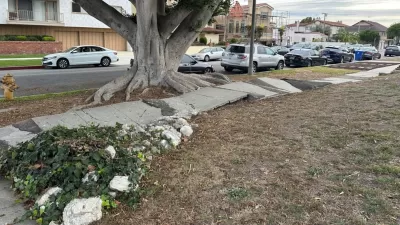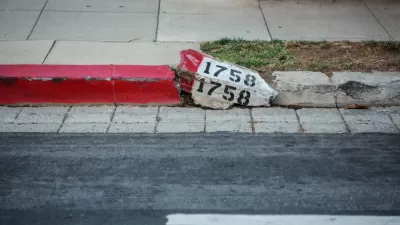City leaders have been in a struggle to come up with a viable solution to fix its buckling sidewalks for the past 50 years. Real estate developer Michael P. Russell takes a look at the work that needs to be done and outlines a plan for a fix.
With 6,500 miles of streets and around 10,000 miles of sidewalks, Los Angeles has the largest roadway system in the nation. What the city does not have is a sidewalk repair program for the more than 40 percent that need fixing.
The city has not had a program for close to 30 years, and as a result, the estimated cost to fix those that need revamping has ballooned to an estimated $1.9 billion.
“On an annual basis, the City spends between $3 and $5 million for trip and fall claims. To solve the problem, the City allocates $10 million for sidewalk repair. At this rate, it will take 190 years to fix the sidewalks, which is absurd.”
Over the years, the city has come up with several funding plans to solve the problem from picking up the tab completely to splitting the cost with residents to relying on federal funds. None of those plans have proved viable.
“Site inspections revealed that over 90 percent of damaged sidewalks occurred where tree roots are found. Restricted growing space is the single most important cause of conflicts between tree roots and hardscapes. (Who put liquid amber and ficus trees on their approved tree list? The City of Los Angeles.)The City’s lawyers view broken sidewalks as the financial responsibility of private property owners. However, the city also has an ordinance requiring that the City make repairs to sidewalks damaged by the roots of City street trees.”
Liability issues also add to the dilemma. Several cities, including Los Angeles, have been sued for violating the Americans with Disabilities Act by not fixing sidewalks.
“For the sidewalks in the City of Los Angeles to get repaired in a fair and timely fashion, it is necessary to follow a totally different approach than in the past. The City Council needs to establish an independent Agency or Authority to be responsible for the repair of all pedestrian pathways in the City.”
The article goes on to unveil an action plan for solving the city’s sidewalk repair problems and how officials might cover the costs.
FULL STORY: These Sidewalks Are Not Made for Walkin’

Alabama: Trump Terminates Settlements for Black Communities Harmed By Raw Sewage
Trump deemed the landmark civil rights agreement “illegal DEI and environmental justice policy.”

Study: Maui’s Plan to Convert Vacation Rentals to Long-Term Housing Could Cause Nearly $1 Billion Economic Loss
The plan would reduce visitor accommodation by 25% resulting in 1,900 jobs lost.

Planetizen Federal Action Tracker
A weekly monitor of how Trump’s orders and actions are impacting planners and planning in America.

Wind Energy on the Rise Despite Federal Policy Reversal
The Trump administration is revoking federal support for renewable energy, but demand for new projects continues unabated.

Passengers Flock to Caltrain After Electrification
The new electric trains are running faster and more reliably, leading to strong ridership growth on the Bay Area rail system.

Texas Churches Rally Behind ‘Yes in God’s Back Yard’ Legislation
Religious leaders want the state to reduce zoning regulations to streamline leasing church-owned land to housing developers.
Urban Design for Planners 1: Software Tools
This six-course series explores essential urban design concepts using open source software and equips planners with the tools they need to participate fully in the urban design process.
Planning for Universal Design
Learn the tools for implementing Universal Design in planning regulations.
Caltrans
Smith Gee Studio
Institute for Housing and Urban Development Studies (IHS)
City of Grandview
Harvard GSD Executive Education
Toledo-Lucas County Plan Commissions
Salt Lake City
NYU Wagner Graduate School of Public Service





























